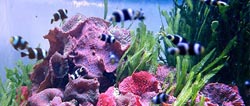An enormous iceberg, C-16, rammed into the well-known Drygalski Ice Tongue, a large sheet of glacial ice and snow in the Central Ross Sea in Antarctica, on 30 March 2006, breaking off the tongue’s easternmost tip and forming a new iceberg.
This animation, comprised of images acquired by Envisat’s Advanced Synthetic Aperture Radar (ASAR), shows the iceberg and the ice tongue before and after the collision. On 26 March, C-16 was pinned at the southern edge of the ice tongue but had s
Bird Flu and Chikungunya – we have all heard about it in the media. But is there a reason to be frightened and how big is the risk for you to catch these diseases in reality?
On 6 April the COST Office in Brussels organised a seminar on Bird Flu and Chikungunya, both viral infections of different kinds. Professor Marc van Ranst, the leading expert in this field from the University of Leuven informed the seminar about these two diseases and the actual risks that they represent fo
White sturgeon populations in the Columbia River may be declining due to the presence of elevated amounts of foreign chemicals including DDT and polychlorinated biphenyls in their bodies, according to new studies by researchers at Oregon State University.
The research by Carl Schreck and Grant Feist, biologists in OSU’s College of Agricultural Sciences, has been published in the journals Environmental Health Perspectives and Archives of Environmental Contamination and Toxicology.

An international team of scientists are working at a rapid pace to study environmental conditions behind the fast-acting and widespread coral bleaching currently plaguing Australia’s Great Barrier Reef. NASA’s satellite data supply scientists with near-real-time sea surface temperature and ocean color data to give them faster than ever insight into the impact coral bleaching can have on global ecology.
Australia’s Great Barrier Reef is a massive marine habitat system made up of 2,90
As long-lived predators at the top of the marine food chain, albatrosses accumulate toxic contaminants such as PCBs, DDT, and mercury in their bodies. A new study has found dramatic differences in contaminant levels between two closely related albatross species that forage in different areas of the North Pacific. Researchers also found that levels of PCBs and DDT have increased in both species over the past ten years.
The differences in contaminant levels between black-footed and
Female harbor seal pups whose blubber falls below average levels may be at higher risk of delayed sexual maturation or death, even if they get enough fat in their diets later on, according to a new study sponsored by The American Physiological Society and presented at Experimental Biology 2006.
The study found that harbor seals pups that were heavier when captured from the wild continued to gain weight and grow regardless of whether the researchers placed them on a high fat or